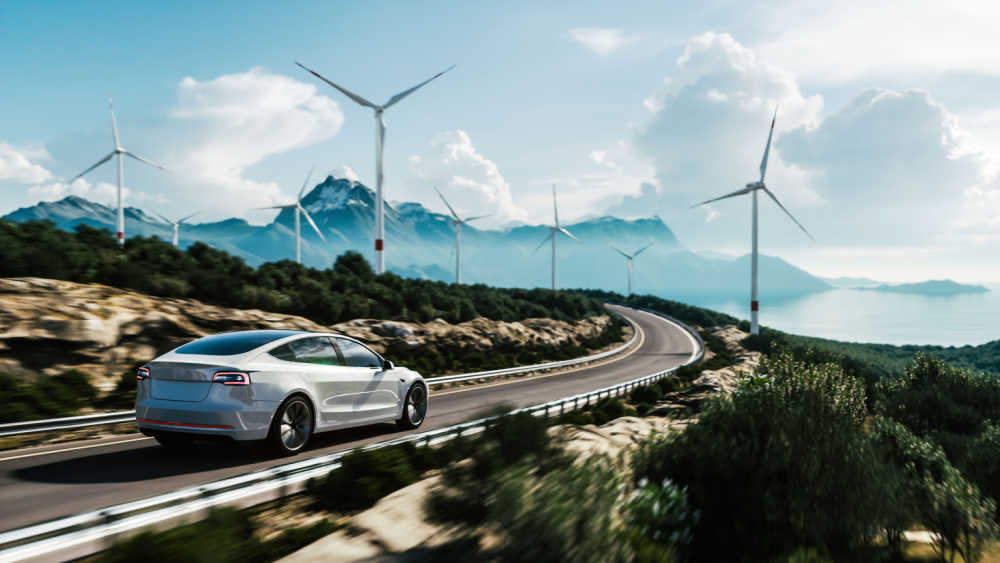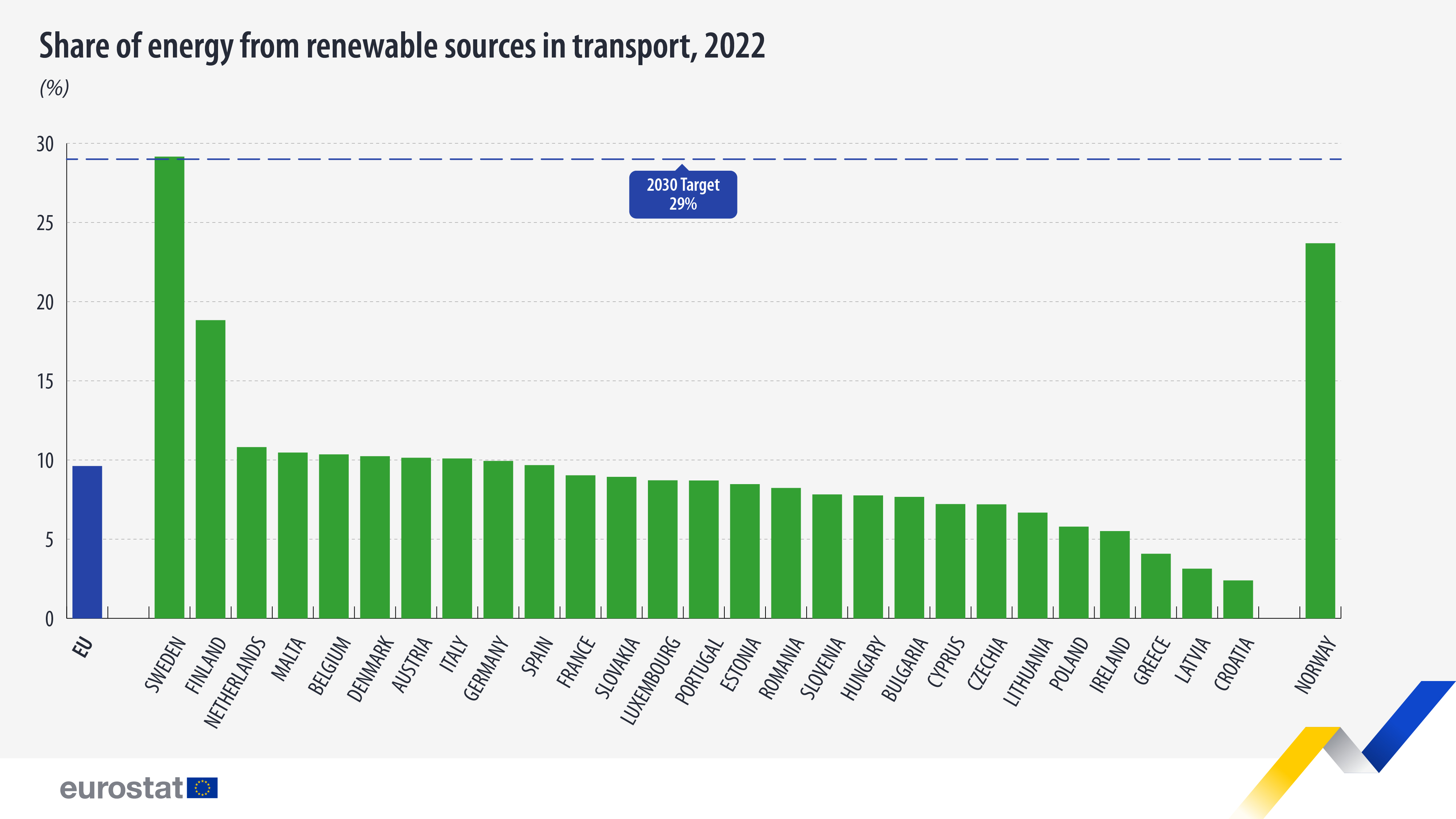Share of renewables in transport increased slightly in 2022

In 2022, the share of renewable energy sources in transport reached 9.6% at EU level, a 0.5 percentage points (pp) increase compared with 2021 (9.1%), but still 0.7 pp below the highest level ever reached in 2020 (10.3%).
This means that a major push is required to meet the 29% target set for 2030 by the EU directive 2023/2413 on the promotion of the use of energy from renewable sources. This Directive also offers countries the possibility to achieve a different target: a greenhouse gas intensity reduction in transport of at least 14.5 % by 2030.
Sweden leads the way in the share of renewables in transport
Sweden (29.2%) is by far the EU country with the highest share of renewables in transport and has already achieved the 2030 target. Finland (18.8%) also shows a very high share, although it would still need to increase by around 10 pp, should it choose the 2030 target set in terms of share of renewables. The two Nordic countries are followed by The Netherlands, Malta, Belgium, Denmark, Austria, Italy, Germany and Spain, all of them with a share of around 10%.
Source dataset: nrg_ind_ren
On the other hand, the lowest shares were registered in Croatia (2.4%), Latvia (3.1%), and Greece (4.1%).
The largest increases from 2021 to 2022 were recorded in Germany (+1.9 pp), the Netherlands (+1.8 pp), and Hungary (+1.6 pp), but even if sustained until 2030 those rates are insufficient to reach the target. On the other hand, the highest decreases were registered in Croatia (-4.6 pp), Latvia (-3.3 pp) and Slovenia (-2.8 pp).
Renewable energy sources consumed in transport include liquid biofuels (e.g. biodiesel complying with certain sustainability and greenhouse gas saving criteria), biomethane (i.e. gas from renewable origin) and the part of renewable electricity consumed in road and rail transport.
For more information
- Statistics Explained article on renewable energy
- Short assessment of renewable energy resources (SHARES)
- Thematic section on energy statistics
- Thematic section on transport
- Thematic section on climate change
- Database on energy statistics
- Shedding light on energy in the EU 2023
- Interactive energy visualisation tools
If you have any queries, please visit our contact us page.

